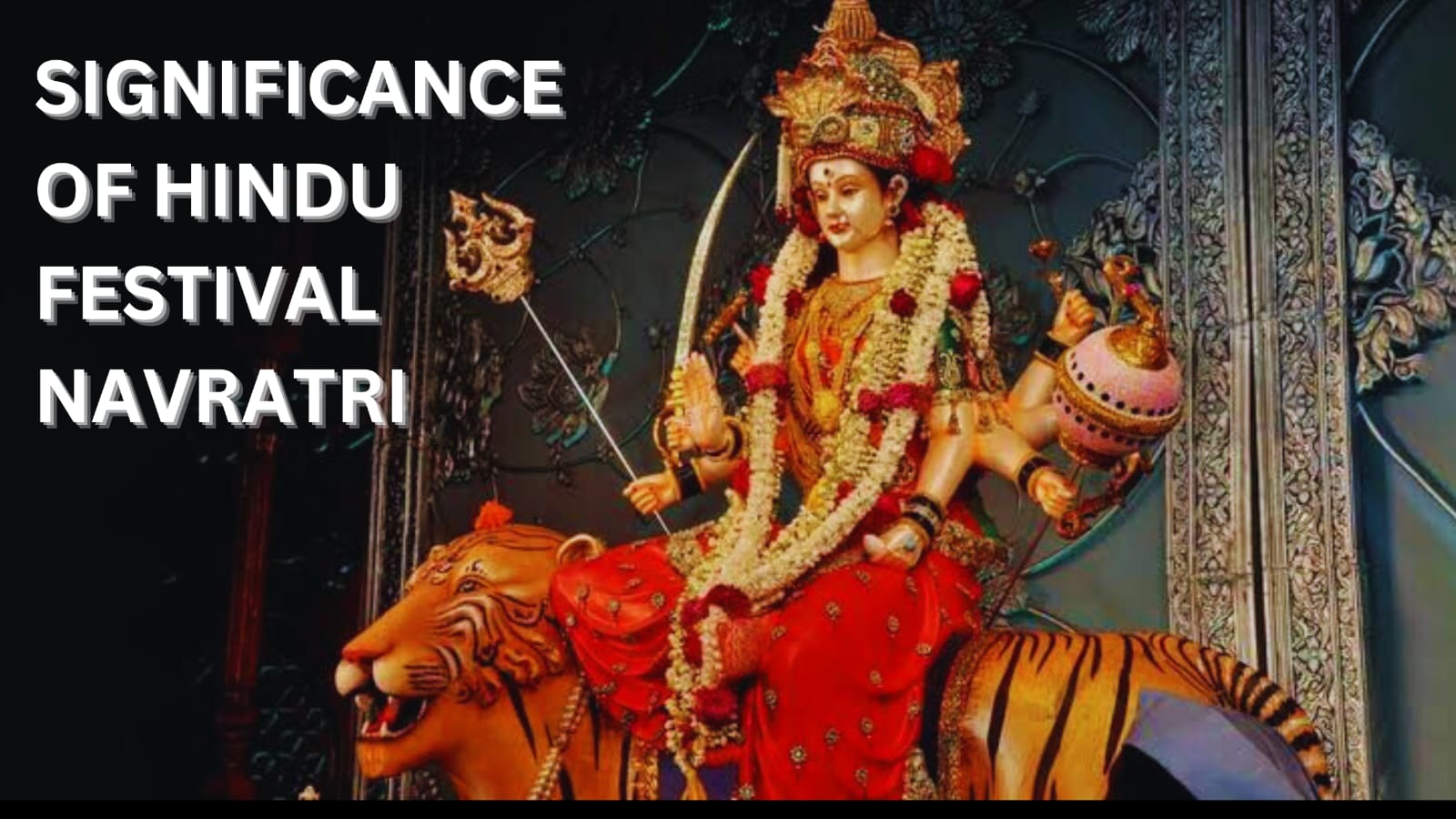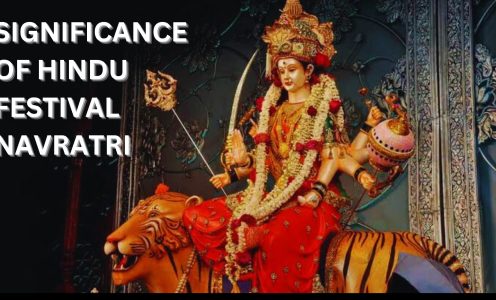SIGNIFICANCE OF HINDU FESTIVAL NAVRATRI
One of the major festivals celebrated all across the country, Navratri symbolises the victory of good over evil. It is also a time to renew your inner energy and welcome a fresh start. The word Navratri is a combination of two sanskrit words – Nava which means “Nine” and ratri which means “Night”. The celebrations of this nine day long festival include Fasting, Puja, Food, Garba, Navratri Vrat Garba, Aarti and lots more. Every pooja during Navratri concludes with vrat katha. In fact, different states across the country have their own way of celebrating this pious festival of Navratri Puja Vidhi.
So, lets get start with discussing the history of Navratri Katha, and the significance behid each of the 9 days of festival.
Navratri History
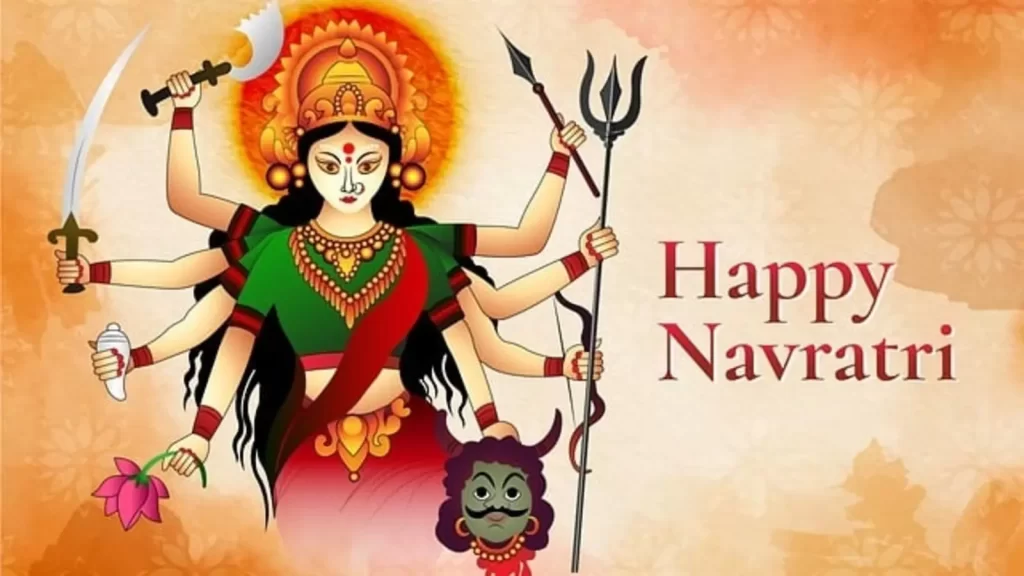
This ancient festival has a very interesting legend associated with it. Legend has it that Mahishasura, the extremely powerful demon king was granted immortality by Lord Brahma. However, there was a condition attached to the whole ordeal – he could only be defeated by a women. Drunk on power, Mahishasura attacked the three spheres ( Heaven , Hell and Earth ) knowing that no one could defeat or kill him. This worried the Gods who then joined forces to put an end to Mahishasura. Lord Vishnu, Lord Brahma, and Lord Shiva came together to create Goddess Durga. The fierce Goddess fought a 15 day long battle with the demon king and finally defeated him on the day of Mahalaya, defining Navratri significance.
Fasting Ritual Of Navratri
Now, that you are aware of Navratri history, Lets dig deeper into the various rituals and traditions associated with the festival. Navrat Vrat is observed to show devotion towards and plese Goddess Durga and seek her blessings. While some other devotees fast through all the nine days, other fast in jodas. Navratri significance lies in the fact that this is also a time for devotees to turn inwards and recharge their being with new energy. Fasting during this festival can make this inner journey easier – it helps cleanse your body, mind and soul. Through fasting, you can shed the restlessness of your mind and fill it with peace and calmness.
Navratri Vrat is for preparing oneself for the upcoming seasonal change. Sharad Navratri marks the beginning of winter. During this period of time of Navratri Puja vidhi, people tend to have lower immunity, making them more susceptible to catching various illnesses. The light and clean diet followed during fasting can help your body keep all these ailments at bay.
The Nine Colours Of Navratri & Each Of The Day
1. First Day – Shailaputri
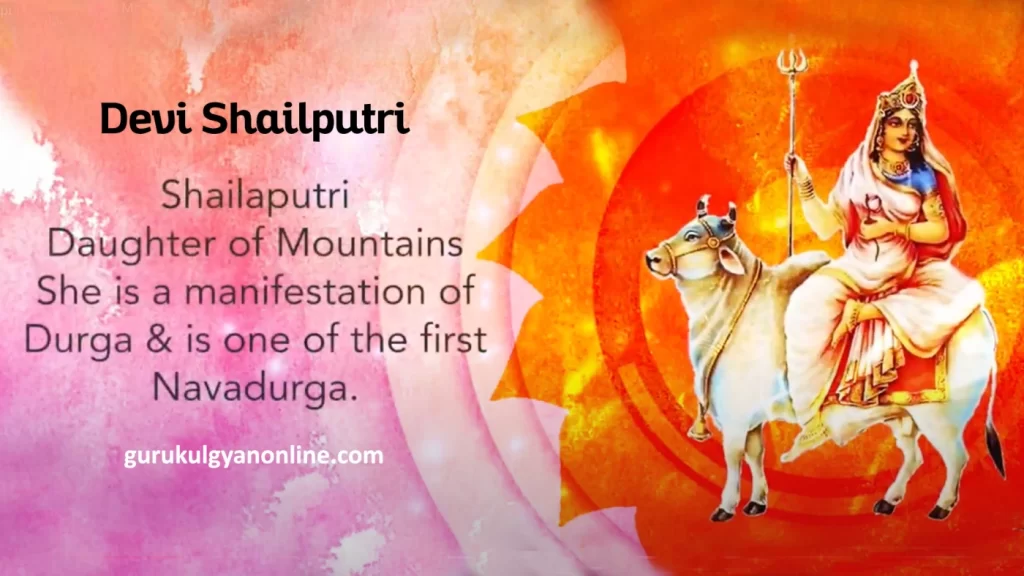
One of the first day, Devi Shailaputri is worshipped. In this form, Devi Parvati is revered as the daughter of Himalaya Raja. Shaila means extraordinary or rising to great hieghts. The divine conciousness represented by Devi always surges from the peak. On this first day of Navratri, we propitiate Devi Shailaputri so that we may also attain the highest state of conciousness.
2. Second Day – Brahmacharini
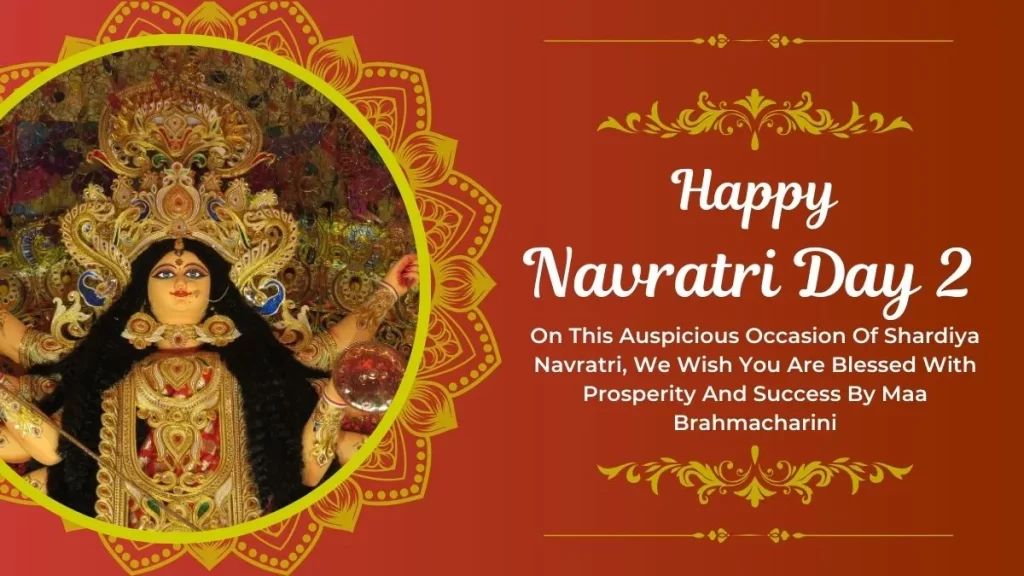
On the second day, Devi Brahmacharini is propitiated. Devi Brahmacharini is the form of Devi Parvati in which she undertook severe penance to have Lord Shiva as her consort. Brahma means divine conciousness and achar refers to behavior. Brahmacharya is the behavior or an act that is established in Divine conciousness. This day is especially scared to meditate and explore our inner divinity.
3. Third Day – Chandraghanta

On the third day, Devi Chandraghanta is the presiding devi. Chandraghanta is the special form that Devi Parvati assumed at the time of Her marriage with Lord Shiva. Chandra refers to the moon. The Moon represents our mind. The mind is restless and keeps moving from one thought to another. Ghanta is a bell which produces only one kind of sound always. The significance is that when our mind is established at one point, the our prana gets consolidated leading to harmony and peace. This day thus signifies withdrawing from all vagaries of the mind, with a single focus on Mother Divine.
4. Fourth Day – Kushmanda
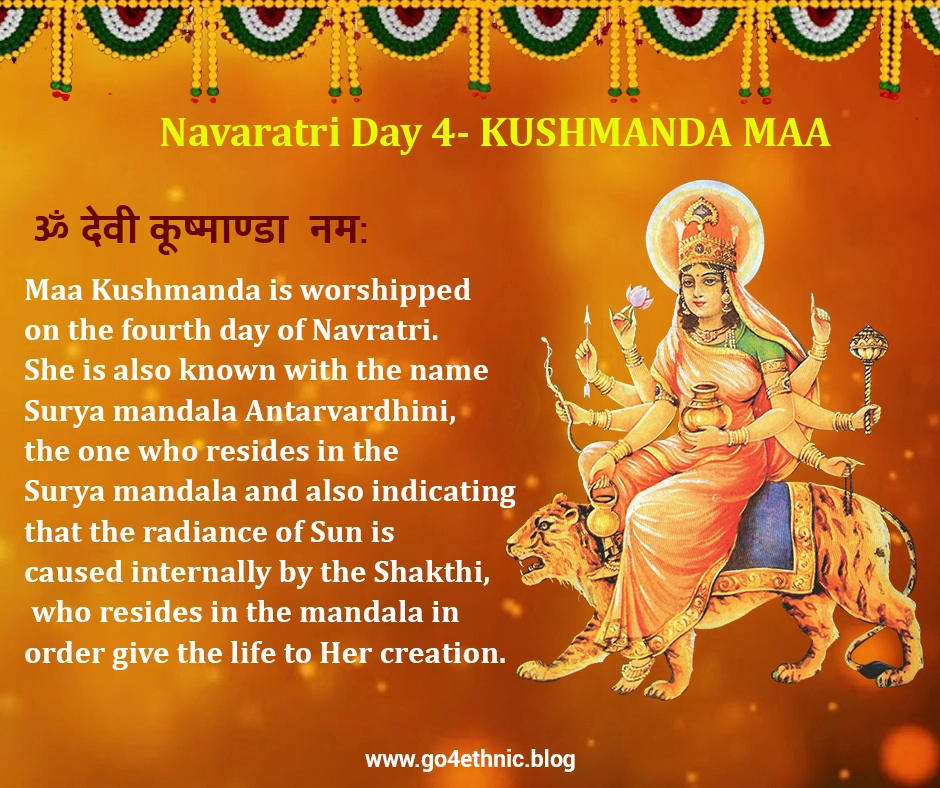
On the fourth day, Mother divine is worshipped as Devi Kushmanda. Kushmanda means a pumpkin. Ku means little , ushma means energy and anda refers to egg. This entire universe which arose from the cosmic egg is manifested from an infinitesimal energy of Devi. A pumpkin also represents prana as it has the unique property of absorbing and radiating prana. It is one of the most pranic vegetables. On this day, we worshipped Devi Kushmanda who showers us with her divine energy.
5. Fifth Day – Skandamata

Skandamata means mother of Skanda. On the fifth day, the motherly aspect of Devi Parvati is worshipped. In this form, she is the mother of Lord Karthikeya. She represents motherly affection. Worshiping this form of Devi brings aboundance of wisdom, wealth, power, prosperity and liberstion.
6. Sixth Day – Katyayani

On the sixth day, Devi manifests as katyayani. It is a form that Mother Divine assumed to annihilate the demonic forces in the universe. She was born from the anger of the Gods. She is the one who slayed Mahishasura. As per our scriptures, anger that supports dharma is acceptable. Devi Katyayani represents that divine principle and form of the Mother Divine who is behind natural calamities and disasters. She is the anger that arises in creation to restore balance. Devi katyayani is invoked on the sixth day to put an end to all our inner foes that are an obstacle on the path of spiritual evolution.
7. Seventh Day – Kalaratri
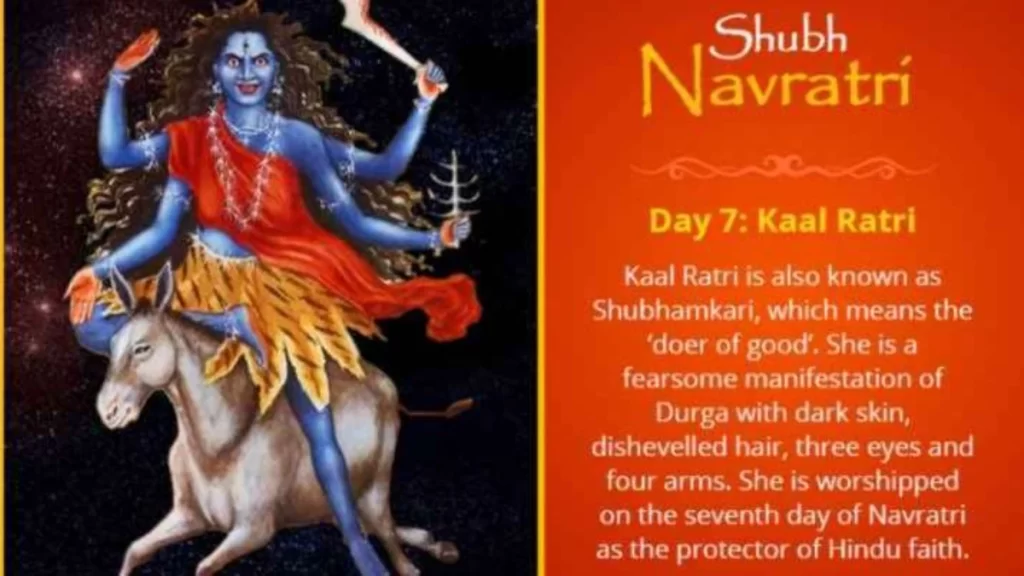
On the seventh day, we invoke Devi Kalaratri. Mother Nature has two extremes. One is terrifying and devastating. The other is beautiful and serene. Devi Kalaratri is a fierce form of Devi. Kalaratri represents the dark night. Night is also considered an aspects of Mother Divine as it is night that brings solace, rest and comfort to our souls. It is only at night that we get a glimplse of infinity in the skies. Devi Kalaratri is that infinite dark energy that houses innumberable universe.
8. Eighth Day – Mahagauri

Devi Mahagauri is that which is beautiful, give momentum and freedom in Life. Mahagauri represents the beautiful amd serene aspect of Nature. She is that energy which propels our lives and also librates us. She is the devi who is worshipped on the eighth day.
9. Ninth Day – Siddhidatri
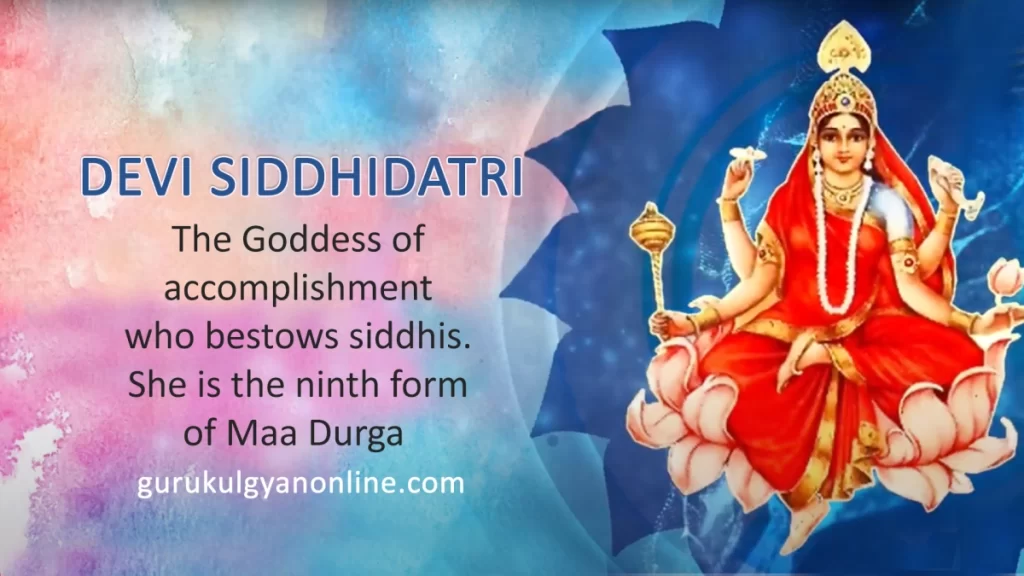
On the ninth day, we worship Devi Siddhidatri. Siddhi means perfection. Devi Siddhidatri brings perfection in Life. She makes the impossible, possible. She takes us beyond the ever reasoning logical mind to explore the realm beyond time and space.
DISCLAIMER : ALL THE IMAGE RESOURCES USED IN THIS ARTICLE IS THE COURTESY OF :
- https://tech.hindustantimes.com/how-to/happy-chaitra-navratri-2023-wishes-messages-images-facebook-and-whatsapp-status-71679397270567.html
- https://gurukulgyanonlinecom.wordpress.com/2020/08/22/navdurga-navratri-devi-shailputri/
- https://english.jagran.com/lifestyle/happy-shardiya-navratri-2023-day-2-maa-brahmacharini-wishes-quotes-images-and-messages-to-share-10107333
- https://www.facebook.com/100765474665967/posts/navratri-day-3-maa-chandraghanta-is-known-as-the-protector-and-she-carries-varie/380774329998412/
- https://twitter.com/Go4Ethnic/status/1447478526018416644
- https://gurukulgyanonlinecom.wordpress.com/2020/10/03/navratri-day-5-skandamata/
- https://in.pinterest.com/pin/758293656005387889/
- https://www.indiatvnews.com/lifestyle/books-culture-navratri-2021-day-7-worship-maa-kaalratri-on-durga-saptami-know-significance-puja-vidhi-stotr-path-mantra-739919
- https://bestastrologerinnoida.wordpress.com/2018/10/17/navratri-day-8-worship-devi-mahagauri/
- https://gurukulgyanonlinecom.wordpress.com/2020/10/24/navratri-day-9-navdurga-siddhidatri/
FOR MORE SUCH ARTICLES VISIT OUR BLOG CATEGORY – HEAVEN CALLS

